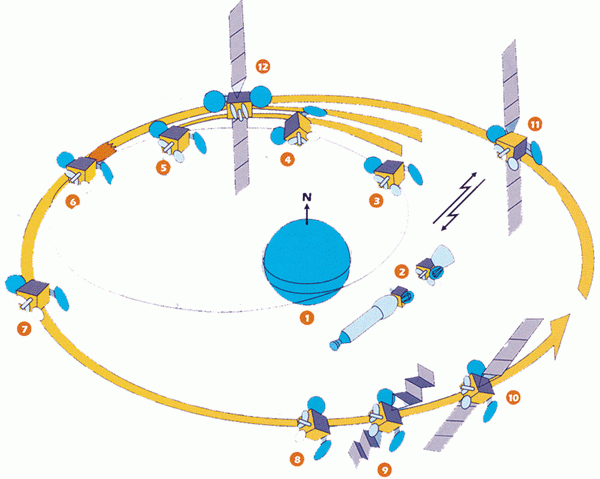Some classic orbital manoeuvres
Remember that a geostationary orbit is a circular orbit in the equatorial plane, at an altitude of about 36,000 km. The satellite is first injected into geostationary transfer orbit, where it spontaneously follows an elliptical trajectory; the apogee is near the final orbit altitude and the perigee at about 200 km. The orbit is then gradually circularized by 3 burns of the apogee kick motor, on 3 different passes at apogee.
After being injected into an elliptical transfer orbit, the satellite circularizes its trajectory using its own thrusters. The apogee kick motor is fired on several passes at apogee, which is almost at the final orbital altitude, to bring the satellite gradually closer to its intended orbit on each pass. The transfer orbit is chosen so that it intersects the equatorial plane at apogee and perigee. The apogee kick motor is therefore pointed to deliver the thrust in the right direction to change the orbital plane.
However, since the transfer orbit is not in the equatorial plane, its inclination cannot be lower than the latitude of the launch base. The satellite must therefore change its plane. Where the orbital plane intersects the equatorial plane, the satellite is oriented so that the thrust propels it in the right direction.Ground control teams then keep the satellite on station by making trajectory corrections every two weeks of so.
A geostationary satellite’s orbital “slot” is a box a few tens of km on a side, corresponding to a latitude and longitude window on the Earth’s surface. A satellite will not stay in this slot if left alone, so it has to be manoeuvred from time to time to keep it on station. A satellite’s position inside its slot is known to within a few kilometres.

